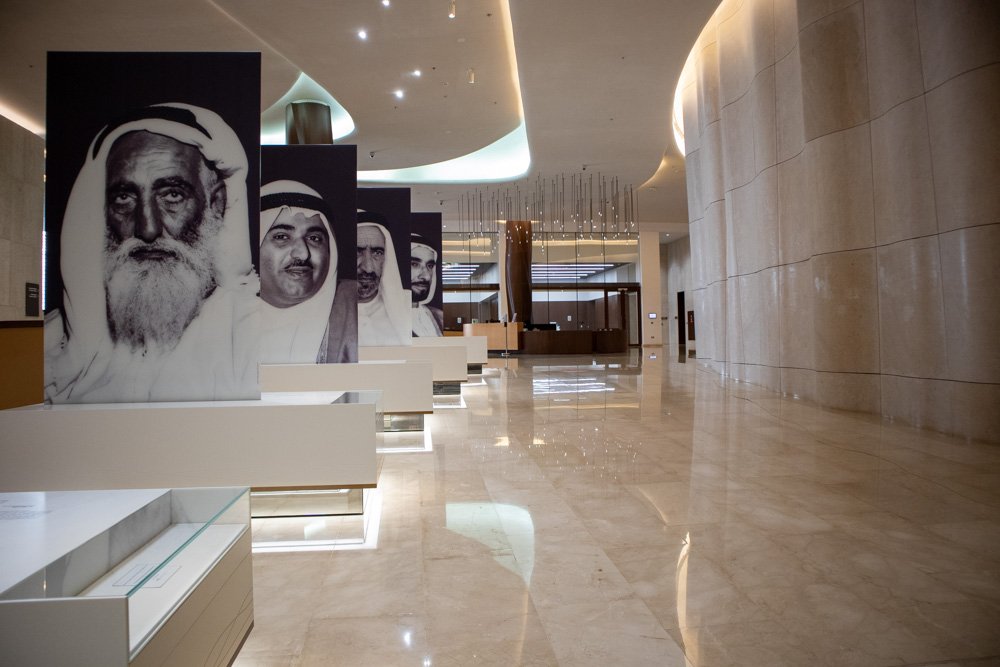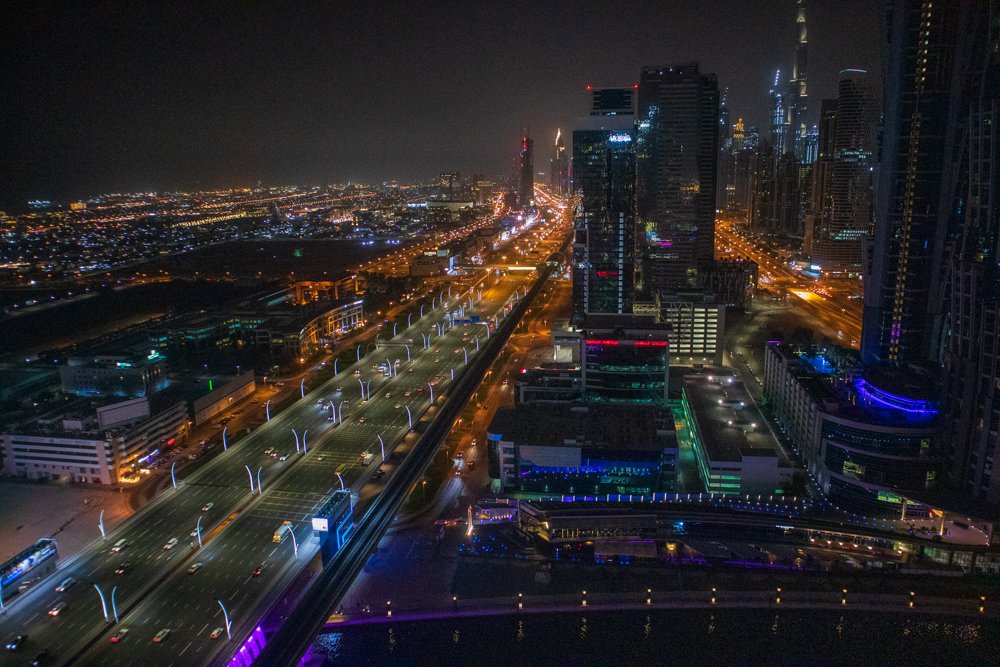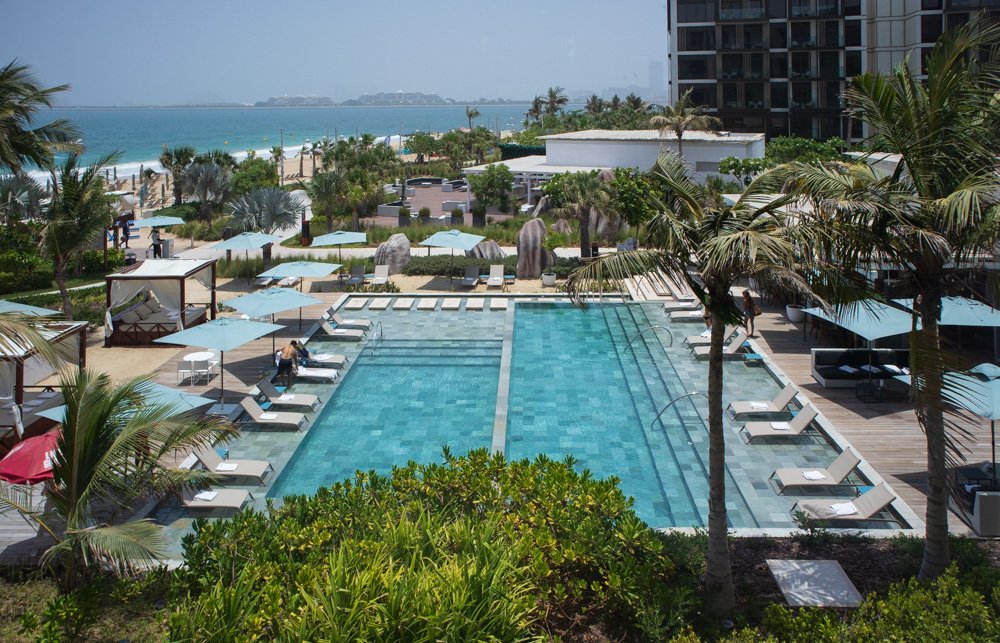Before travelling to the United Arab Emirates, I had several preconceptions. However, the UAE surprised me in many ways. To prepare for the trip, I researched what to do, when to go, and the country’s history and geography. You can also learn more about the country by visiting the Etihad Museum in Dubai. Still, you’ll save a lot of time reading this article first!
Table of Contents
About the United Arab Emirates
The United Arab Emirates, often shortened as UAE, is a group of independent Emirates run by local sheikhs. The UAE has a federal system of absolute hereditary monarchies. Seven Emirates are part of the UAE: Dubai, Abu Dhabi, Ajman, Fujairah, Ras al-Khaimah, Sharjah and Umm al-Qaywayni.
When the UAE was born
The United Arab Emirates (UAE) is a federation formed in 1971 when the United Kingdom’s protectorate over the Truce or Trucial States ended. Digging deeper, the history of the UAE is much more fascinating than it seems at first glance.
Indeed, the Arabian Peninsula has always been a crossroads for merchants. The cuisine and architecture of the Emirates reflect the influences of other cultures, particularly Iran. Before the British Protectorate, this area was under the Ottoman Empire’s direct influence. However, the Emiratis’ traditional way of life remained the same. The local population continued fishing and pearl harvesting, alternating with periods of nomadism in the desert.
Despite being a strategic area for international trade, the UAE remained divided for centuries. The Arabian Peninsula was also known as the Pirate Coast because some local sheikhs favoured pirate activity. The truce of 1853 imposed by the British made the emirates known as Trucial States or Truce States, but the most significant change came with the discovery of oil in the 1950s and 1960s.
The UAE started a transformation from a poor region divided by tribal conflicts into one of the most prosperous economies. To this day, their growth does not falter, even with the contrasts that a system of hereditary absolute monarchy brings.

Where are the UAE
The UAE is located in the Middle East, on the Arabian Peninsula, overlooking the Persian Gulf and partly the Gulf of Oman. Most of the UAE is desert, but there are also real mountains. On the east coast of the UAE, the Hajar mountain range rises, offering an interesting diversity of landscapes to travellers who want to discover this area.
Who rules the United Arab Emirates
The United Arab Emirates is a federation of absolute monarchies headed by a president and a prime minister. Traditionally, the president is always the sheikh of Abu Dhabi, the largest Emirate, and the prime minister is the sheikh of Dubai, the second largest Emirate in the federation.
The equivalent of parliament in Western democracies is the National Federal Council, composed of 40 members chosen from individual nominations. However, it has only advisory power.
Despite having an absolute monarchy, the UAE has relatively liberal laws compared to other Arab countries such as Saudi Arabia. However, the reference law is the Islamic Shari’a for some aspects of family law, inheritance and some crimes. Despite this, the expat women I have met enjoy almost as much freedom as in Western countries and are very satisfied with their quality of life.
How big are the UAE
There are seven Emirates in the UAE, the largest and most populated of which is Abu Dhabi. Abu Dhabi comprises about 38% of the UAE’s population, while Dubai has 30%. Despite these numbers, only 15% of Dubai and Abu Dhabi people are Emiratis with UAE nationality. Most of the population are expats!
Discover all the United Arab Emirates
The United Arab Emirates is renowned for its stunning skyscrapers, modern infrastructure, lavish shopping malls, and rich cultural heritage. It offers a diverse range of experiences for both visitors and residents, from the impressive architecture of the Burj Khalifa to the sandy beaches of the Arabian Gulf.
There’s something for everyone in the UAE, whether you’re interested in exploring ancient forts and historic sites, indulging in world-class dining and entertainment, or simply enjoying the warm hospitality of the local people. Below, you can find a brief overview of the main features of each Emirate in the UAE.
Dubai
Dubai is often compared to New York or Miami in the Arab Emirates. The city spans over 40 km and shows no signs of slowing down, with new districts constantly emerging. This Emirate is ideal if you love the sea and city life, including sandy beaches and top-rated restaurants.
They say you can do anything in Dubai, and it’s true! You can find exclusive beach clubs, enjoy water sports, and even ski on the indoor slope of the Mall of Emirates. The latter is quite kitschy, but Emiratis love it! Dubai has many attractions: aquariums, safari zoos, Ferris wheels, cantilever pools, fountains, and hipster neighbourhoods. Name something, and you’ll find it in Dubai for sure!
Dubai is also the city of records, with the world’s tallest skyscraper Burj Khalifa, the artificial island The Palm, the world’s largest shopping mall Dubai Mall, and the world’s largest frame Dubai Frame. Other marvels are still under construction!
I recommend visiting Dubai without preconceptions and allowing yourself to be dazzled by the vision of the reigning sheikh, who aims to dominate all possible charts.

Abu Dhabi
The Emirate of Abu Dhabi has the largest surface area. It borders Saudi Arabia and Oman, with which it shares part of the Fourth Void, the world’s largest desert. In the middle of the desert in the Abu Dhabi territory lies the Liwa Oasis, about a hundred kilometres long, a destination for off-road excursions and a tourist destination, with hotels and resorts of all categories. In addition to the desert, Abu Dhabi has many islands with rocky heights and mangrove forests to discover by paddling in a kayak.
The eponymous city of Abu Dhabi is the capital of the United Arab Emirates. It is home to the federal government, foreign embassies, and oil companies. Like Dubai, Abu Dhabi’s cityscape has many iconic skyscrapers and buildings with revolutionary architecture. In Abu Dhabi, you can visit several UNESCO heritage sites, the white marble Sheikh Zayed Grand Mosque with eighty domes and a thousand columns, the local branches of the Louvre and the Guggenheim, and stroll along the Corniche waterfront.
Ras al-Khaimah
Ras al-Khaimah is best known for its vast desert, a destination for off-road excursions. However, this Emirate offers various sights like mountains and kilometre-long beaches. Indeed, Ras al-Khaimah is home to the summit of Jebel Jais, the highest mountain in the United Arab Emirates.
Sharjah
I’ve been to the Sharjah desert for dune bashing, and its orange dunes are truly breathtaking. Besides the desert and the coast, the Emirate of Sharjah also has a very interesting, if little-known, cultural offer. In 1998, it was the Capital of Arab Culture because of its many historical buildings, among which the Museum of Islamic Art stands out.

Ajman
Ajman is the smallest and least known Emirate in the Arab Emirates. Its economy is predominantly agricultural, based on the cultivation of dates. Still, its capital also offers some cultural attractions, such as the archaeological site of Mowaihat and the Ajman Museum, located in an 18th-century fortress.
Fujairah
The Emirate of Fujairah is also little visited and almost unknown to travellers. Yet it has several archaeological sites, fortresses, and an ancient mosque. Fujaira’s landscape differs from the other Emirates by its wadis, scenic dry river beds home to amphibians, birds, and reptiles found only in this area.
Umm al-Qaywayni
Umm al-Qaywayni is the least populated and most touristy Emirate in the Arab Emirates. Its attractions are the Umm Al Quwain Fort, the Al-Dour archaeological site and Dreamland Aqua Park, the largest water park in the UAE.
Practical information for visiting the UAE
If you’re planning a trip to the United Arab Emirates, it’s essential to do some research beforehand. Below, I’ve provided some valuable information to help you prepare for your trip. Booking the attractions you want to see in advance and visiting their websites will give you essential information about their opening hours, admission costs, and any special events or exhibitions that may be happening during your visit. Proper planning will help you make the most of your trip.
When to go to the United Arab Emirates
The United Arab Emirates can be visited all year round. However, the best time is winter to avoid the scorching heat of the summer months. From June onwards, many outdoor attractions close and cannot be visited. If you want to avoid the high season, spring and autumn are great times to see the UAE and experience its affordable luxury!
Climate
The climate in the UAE varies between the coastal areas, the mountainous parts and the desert. For desert excursions, consider that summer can have very high temperatures. Along the coast, the climate is humid, sometimes recognisable by a damp mist or by the fact that your camera lens fogs up!
If you want more precise data, the temperature in summer generally varies between 35 and 50 degrees Celsius, and in winter, between 25 and 35 degrees Celsius during the day and about 15 degrees Celsius at night. Despite the humidity along the coast, rain in the UAE is practically non-existent, so you won’t have to worry about carrying an umbrella.
Time zone
In the UAE, there are 4 hours more than in the UK, Greenwich time, when it is standard time (GMT +4) and 3 hours more when it is daylight saving time (GMT +3).
Electrical sockets
The most common electrical sockets in the United Arab Emirates are British three-point sockets. However, you can also find EU two-pronged sockets. High-end hotels also have USB sockets for mobile phones. The best way to charge your stuff is to travel with a universal plug adaptor.
Language
The official language in the UAE is Arabic. Still, English is spoken fluently by all as it is the language of tourism and was also the official language until 1971, during the period of the British Protectorate. Road signs and tourist signs are all bilingual in Arabic and English, as are radio broadcasts, television, and newspapers, which always have an English version.
How to dress in the Arab Emirates
Emiratis routinely dress in traditional attire: men in a white tunic called dishdasha or kandura and the ghutra, a cotton head scarf. Women wear the abaya, a black overcoat covering their clothes, and the sheila veil. However, Western clothes are widespread and accepted everywhere, as most of the population is foreign. At the entrance of public places, you might still see signs stating ‘Please wear conservative clothing’, but over the years, they have reduced in number. Despite the sign, you can still wear a sleeveless tank top in the malls and not be bothered.
Read the article What to pack for a trip to Dubai to know how to dress for any occasion.
You can also wear bikinis and swimming costumes of all kinds in hotel swimming pools and beach clubs frequented by foreign tourists. At the same time, toplessness is forbidden everywhere, as the UAE is a Muslim country. On public beaches, however, I would advise you to choose a swimming costume that is not too skimpy.

Feel free to write in the comments section if you already know this information about the United Arab Emirates and if I helped you to plan your next trip!
